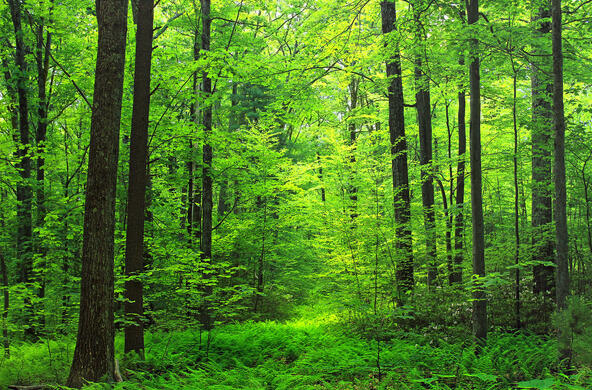As spring unfolds across New York, the familiar leaf-out of trees may look different or may not occur at all in some communities. Why? It's no mystery. Our trees are being killed by insects and diseases that are imported as an accidental byproduct of global trade.
These pests arrive on our shores as hidden stowaways in wood shipping crates and pallets or on live trees and shrubs bound for nurseries. Imported pests are the most urgent and underappreciated threat facing our nation's trees. They can decimate an entire tree species in just decades, and they cost homeowners and municipalities billions of dollars in damages each year.
With 62 active imported pests, New York has more than any other state. This is not something we want to be No. 1 in. Over the last century, chestnut blight wiped out the majestic chestnuts that once dominated our forests, and Dutch elm disease killed off most of the stately elms that once graced our city streets.
In the Hudson Valley, Catskills and Finger Lakes regions, a tiny aphid-like insect called the hemlock woolly adelgid is sucking the life out of hemlocks, the anchor of our old-growth forests.
In the Adirondacks and the Catskills, beech bark disease is taking out the largest beeches. Emerald ash borer, a little beetle that has killed over 100 million ash trees in the Midwest, is now active throughout the state, including the Capital Region.
Oaks, firs, dogwoods, butternuts and many other tree species have also been on the hit list of imported forest pests. And the arrival of new pests continues unabated. We urgently need to step up prevention efforts so that global trade doesn't come at the cost of our trees and the many benefits we receive from them.
Dealing with invasive insect outbreaks has been estimated to cost well over $2 billion annually. Homeowners are hard hit. They have to pay to remove infested trees, and then lose property value when the trees are gone. Local governments bear the large cost of taking down dead trees and replanting new ones on city streets and in parks.
When we lose trees we lose the services they provide, including shading and cooling our homes, reducing stormwater runoff, cleaning the air, providing habitat for wildlife and beautifying our lives.
The good news is that we know how to close the door on imported forest pests. Changes to national and international trading regulations will have the most impact. The most important place to start is switching to alternatives to solid wood packaging, since the most destructive insects of late have arrived hidden in wood crates and pallets. We should also restrict the importation of live trees and shrubs that could carry diseases or insects.
Other common-sense measures include tightening the enforcement of penalties for noncompliant shippers and expanding programs with our trading partners abroad to ensure that U.S.-bound shipments are clean. Finally, we should strengthen our national system for finding and eradicating new pests before they gain a foothold, because once they start to spread they are often impossible to stop.
By stepping up prevention, federal policy can reduce the hidden environmental cost of trade that is currently being paid by communities across the U.S. We need to embrace tree-smart trade for the sake of our trees, and our wallets.







